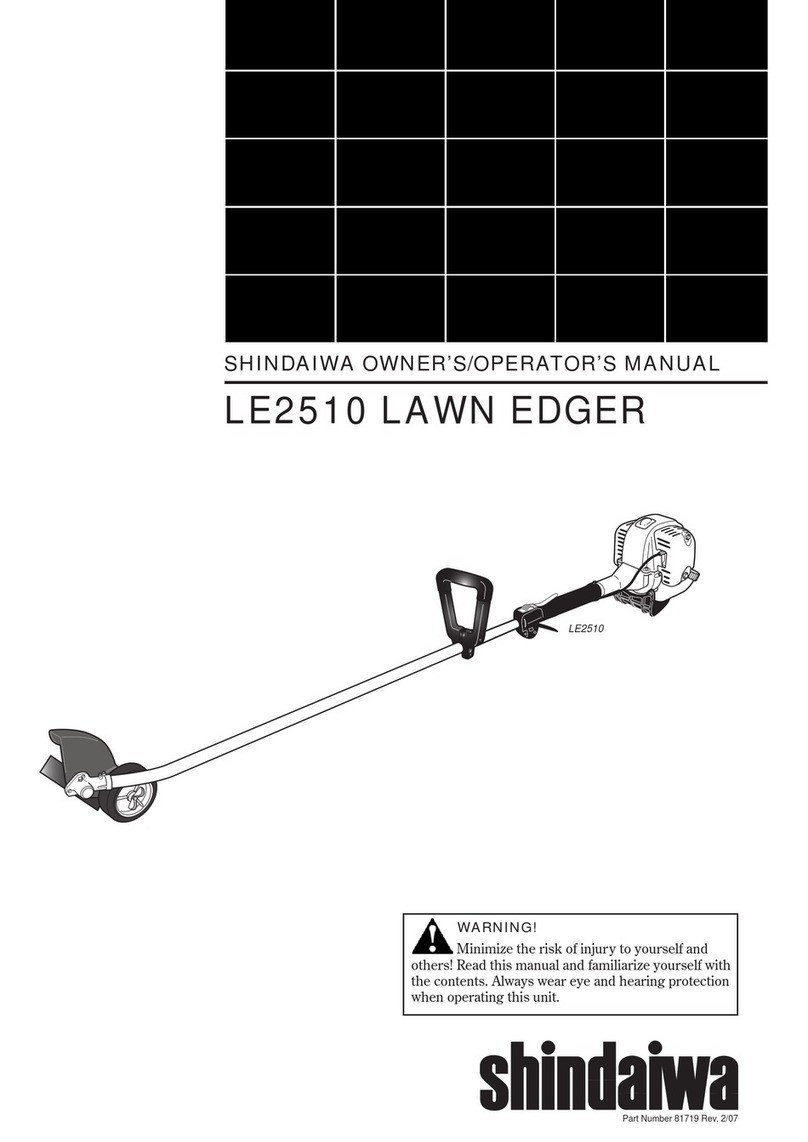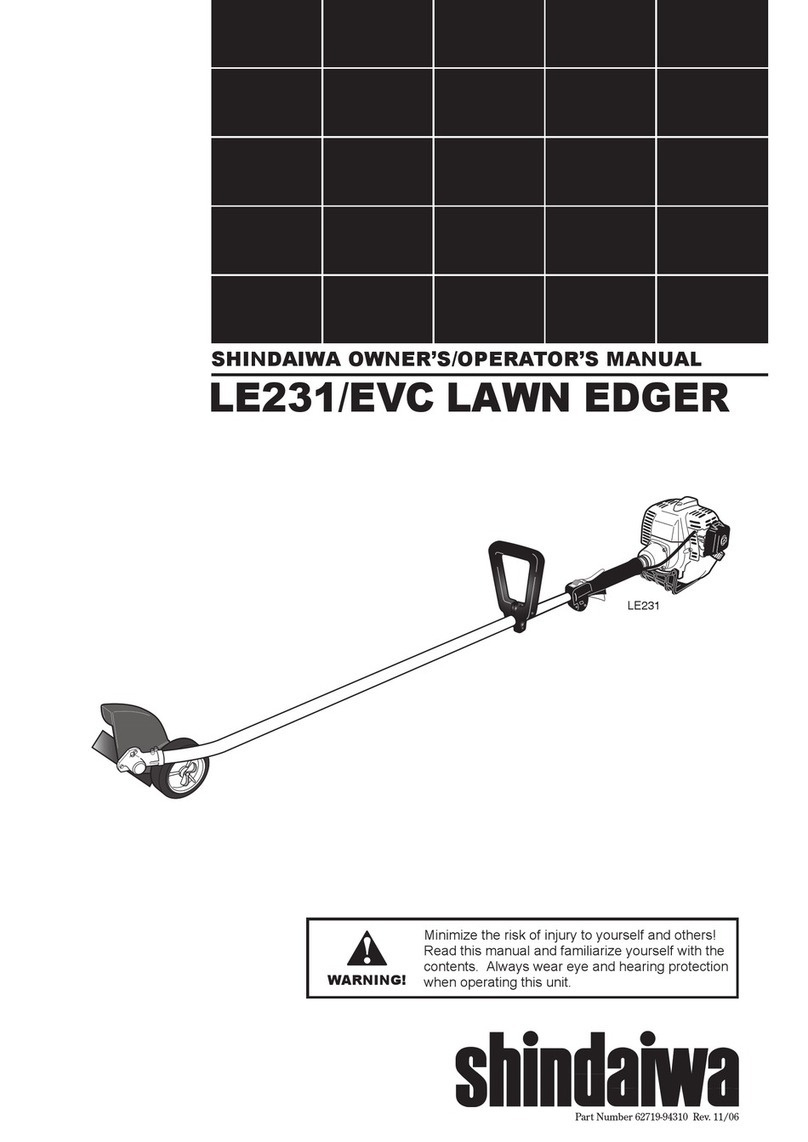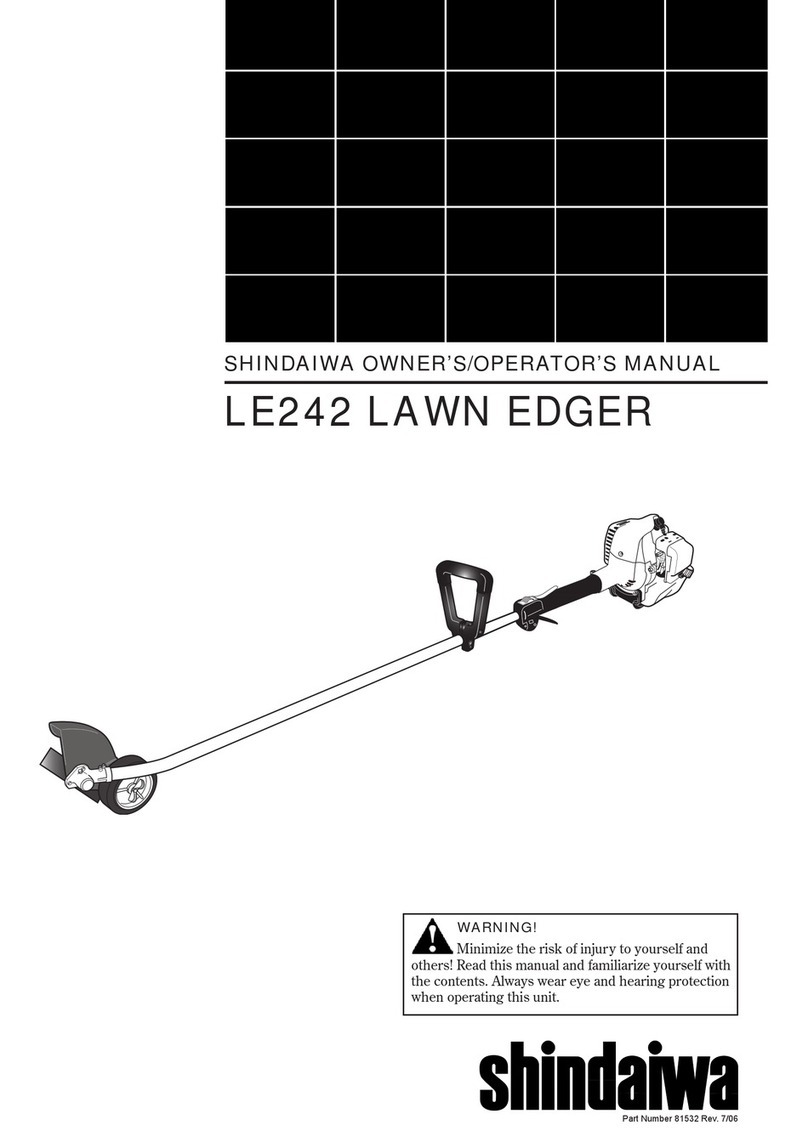9
Slide the ignition switch to
the “I” position.
ON
Slide the ignition switch to
the “I” position.
ON
1. Slide the ignition switch to the “I”
position.
2. Press the primer bulb until fuel
can be seen owing in the trans-
parent return tube.
Primer
bulb
Return tube
Press the primer bulb
Starting the Engine
IMPORTANT!
Engine ignition is controlled by a two position switch mounted on the throttle housing labeled, “I” for ON or START and “O” for OFF
or STOP.
WARNING!
Never start the engine
from the operating position.
IMPORTANT!
The primer system only pushes fuel
through the carburetor. Repeatedly
pressing the primer bulb will not ood
the engine with fuel.
CAUTION!
Do not pull the recoil starter to
the end of the rope travel. Pulling
the recoil starter to the end of
the rope travel can damage the
starter.
3. Set the choke lever to the
CLOSED position if engine is cold.
4. While holding the outer tube rmly
with left hand. Use your other hand
to slowly pull the recoil starter han-
dle until resistance is felt, then pull
quickly to start the engine.
5. When the engine starts, slowly
move the choke lever to the “OPEN”
position. If the engine stops after
the initial start, close the choke and
restart.
Closed
Set the choke lever to the CLOSED
position Make sure the
attachment is clear
of obstructions!
...and pull recoil
starter handle
upward
Hold
the unit
rmly...
WARNING!
The attachment will
operate immediately when the
engine starts, and could result
in possible serious injury.
Keep movable parts of the
attachment away from objects
that could become entangled
or thrown, and surfaces that
could cause loss of control.
IMPORTANT!
If the engine fails to start after several
attempts with the choke in the closed
position, the engine may be ooded
with fuel. If ooding is suspected, refer
to the “Starting a Flooded Engine” sec-
tion of this manual.
Open
When the engine starts, slowly move the
choke lever to the “OPEN” position
■After the engine starts, allow the
engine to warm up at idle 2 or 3
minutes before operating the unit.
■If the engine does not continue to
run, repeat the appropriate crank-
ing procedures for a cold or warm
engine.When the engine starts,
clear excess fuel from the combus-
tion chamber by accelerating the
engine several times with the throt-
tle lever.
When the Engine Starts...
■Advancing the throttle makes the
cutting attachment move faster;
releasing the throttle permits the
attachment to stop moving. If the
cutting attachment continues to
move when the engine returns to
idle, carburetor idle speed should
be adjusted (see “Adjusting Engine
Idle”.).
If the engine does not start
■Repeat the appropriate starting pro-
cedure for a cold or warm engine.
■If the engine still fails to start,
use the procedures for “Starting a
ooded engine.”





































